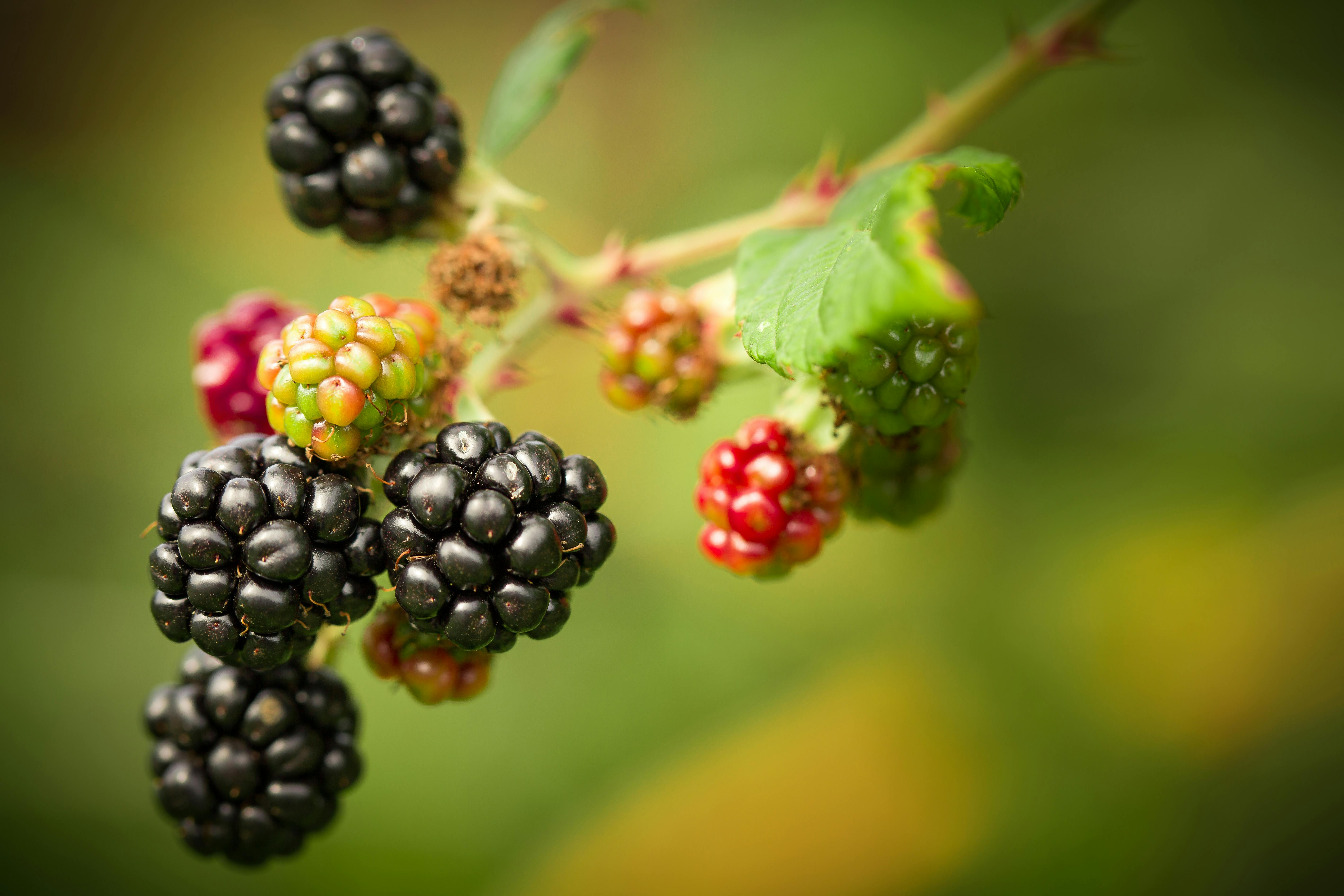Blueberries are one of the most popular and delicious fruits to grow. Not only are they delicious, but they are also incredibly healthy and packed with vitamins and antioxidants. With their sweet flavor and deep blue hue, blueberries can be used in a variety of dishes and desserts. Growing blueberries can be an easy and rewarding experience for any gardener or fruit enthusiast. In this article, we will explore what to grow with blueberries to create a successful and bountiful harvest.In order for blueberries to thrive, the soil needs to have a pH of 4.0-5.5, good drainage, lots of organic matter, and a high amount of available nutrients. The soil should be well aerated with a light texture that allows air and water to reach the roots. Sandy soils are best for blueberries as they allow for good drainage and are easier to manage than clay soils. Blueberries need plenty of water during the growing season but cannot tolerate wet feet or water-logged conditions. A layer of mulch can help the soil retain moisture and keep weeds at bay. Additionally, blueberry plants will benefit from a fertilizer applied in early spring that is high in phosphorus and potassium but low in nitrogen.
What Types of Blueberries Are Best Suited for Growing?
When it comes to growing blueberries, there are many varieties to choose from. The best types of blueberries for growing depend on the climate and soil conditions of your particular area. Northern highbush blueberries are hardy in cold climates and grow best in regions with cold winters and hot summers. Southern highbush blueberries have a lower chill requirement and thrive in warmer climates. Rabbiteye blueberries are recommended for areas with hot summers and mild winters, as they prefer warmer temperatures. Lowbush or “wild” blueberries grow well in any region but require more maintenance than other varieties.
No matter what type of blueberry you decide to grow, the soil must be well-drained and fertile for best results. Blueberry plants need acidic soil with a pH balance between 4.5-5.5 for optimal growth, so you may need to adjust the pH level before planting. You will also need to provide ample sunlight; most types of blueberry plants require at least six hours per day during the growing season. Additionally, they must be watered regularly during dry spells; however, overwatering can lead to root rot or other problems.
When it comes time to pick your berries, look for plump, firm fruits that are uniform in color and size; these will have the sweetest flavor and highest nutrient content. When harvesting from bushes, be sure not to pull on the stems since this can damage the plant; use pruning shears instead if necessary. Once picked, store your berries in an airtight container in the refrigerator until you’re ready to enjoy them!
Where to Plant Blueberry Bushes
Blueberry bushes prefer a sunny location with well-drained soil. Choose a spot in your garden that gets at least 6 hours of sun a day. It’s best to plant your blueberry bushes near other acid-loving plants such as azaleas and rhododendrons, as they thrive in similar soils and conditions. Avoid planting near trees or shrubs, as these can compete with the blueberry bushes for nutrients and water.
Preparing the Soil for Blueberry Bushes
Before planting, it is important to prepare the soil for your blueberry bushes. The soil should be rich in organic matter and have a pH level between 4.5 and 5.5, which is slightly acidic. You can test the pH level of the soil with a pH meter or a simple litmus paper test kit available at most garden centers. Add compost or fertilizer to help increase the organic matter in the soil and amend it with peat moss or sulfur chips to lower the pH level if needed.
Planting Blueberry Bushes
When planting blueberry bushes, dig a hole twice as wide as the root ball of your bush but only half as deep. Place some compost in the bottom of each hole before adding your bush and gently spread out the roots before filling in with soil. Water thoroughly after planting to settle the soil around your bush.
Caring for Blueberry Bushes
To ensure healthy growth for your blueberry bushes, water regularly during dry spells and mulch around their bases to retain moisture. Prune regularly to maintain shape and encourage new growth by cutting back old stems that are not producing fruit anymore. Fertilize twice a year with an acid-based fertilizer like one made specifically for blueberries, following instructions on how much fertilizer to use per bush.
Fertilizer
Blueberries require fertilizers that are high in phosphorus and potassium, such as 5-10-10 or 5-20-20. These fertilizers should be applied in the spring and summer months when the plants are actively growing. It is important to follow the directions on the fertilizer package and not to over-fertilize, as this can lead to problems such as reduced fruit production and poor tasting fruit. A slow release fertilizer is also recommended for blueberries, as it will provide a more steady supply of nutrients throughout the growing season.
Watering Regime
Blueberries need regular watering throughout the growing season in order to produce healthy fruit. The soil should be kept moist but not saturated, so water deeply once a week. During periods of drought or extreme heat, water more frequently to keep the soil moist. Mulching around the plants can also help retain soil moisture and reduce weeds.
Managing Pests and Diseases in Blueberry Bushes
Blueberries are a delicate and delicious fruit, but they can be prone to pests and diseases. In order to ensure a healthy harvest, it is important to know how to manage pests and diseases in blueberry bushes. Here are some tips for keeping your plants healthy:
First, inspect your plants regularly for signs of pests or disease. Look for insects, wilting leaves, discoloration, or mold on the fruit. If you find any of these signs, take action right away.
Next, practice good cultural practices such as pruning dead branches and removing weeds. This will help reduce the risk of disease and pest infestations. Additionally, it is important to provide adequate drainage for your plants so they do not become waterlogged.
Thirdly, add mulch around the base of the plants to prevent weeds from growing around them and competing with them for nutrients. Mulch can also help keep soil temperatures consistent throughout the growing season.
Finally, use natural methods such as companion planting or trap crops to control pests and diseases in your blueberry bushes. Plants like garlic or marigolds can help repel certain insects while trap crops can lure them away from your blueberries. Additionally, you can use beneficial insects such as ladybugs or lacewings to naturally control pests in your garden.
By following these tips you can successfully manage pests and diseases in blueberry bushes and enjoy a plentiful harvest of delicious berries each year!

Pruning Blueberries
Pruning blueberries is an important part of the harvesting process. Pruning helps to maintain a healthy plant and promote better berry production. When pruning blueberry bushes, it is important to remove any dead or diseased branches, as well as thin out the branches so that the bush has enough space to produce more berries. It is also important to remove any suckers, which are new shoots coming up from the ground and are not productive for berry production. Pruning should be done in late winter or early spring before new growth begins.
Harvesting Blueberries
Harvesting blueberries should be done when the berries are ripe and have a deep blue color. Ripe berries should come off the bush easily when gently tugged. Berries that are still green or pale in color should be left on the bush until they fully ripen. When harvesting, it is best to use a shallow container so as not to damage the delicate berries. Berries can also be harvested by cutting off entire clusters with scissors or shears and then picking out any unripe berries afterward. Blueberries can be stored in the refrigerator for up to two weeks if they are not eaten right away.
Companion Plants for Blueberries
Blueberries are a delicious and nutritious fruit, but they can be difficult to grow. To ensure your blueberry plants thrive, you’ll need to choose companion plants that complement them. Luckily, there are several plants that make great companions for blueberries.
These companion plants provide nutrients and help ward off pests and disease. Some of the best companion plants for blueberries include herbs such as rosemary, thyme, oregano, and mint; shrubs like rhododendrons and azaleas; trees like oaks and pines; grasses like fescue; and flowers such as daisies, marigolds, petunias, and pansies.
Plants with shallow roots like grasses or flowers can also help prevent soil erosion around the base of the blueberry bush. These ground cover plants can also help keep weeds away from the blueberry bushes by competing with them for sunlight and nutrients in the soil.
In addition to providing nutrients for the soil around the blueberry bush, companion planting can also provide habitat for beneficial insects that will help protect your blueberry bush from pests and disease. Ladybugs, hoverflies, lacewings, parasitic wasps are all beneficial insects that will help keep your blueberry bushes healthy.
When choosing companion plants for your blueberry bush make sure to select ones that have similar requirements in terms of sunlight exposure and water needs. Additionally, make sure to space each plant at least one foot apart to give them enough room to grow without competing with each other for resources or light. With a little bit of planning you can create a beautiful garden filled with delicious blueberries!
Maximizing Yields When Growing Blueberries
Growing blueberries is a rewarding experience that can yield delicious fruits and plenty of memories. However, in order to maximize your crop’s yields, there are some important steps you should take. Here are some tips for ensuring you get the most out of your blueberry bushes:
First, make sure that you are working with a variety of blueberry bushes that are suited to your local climate and soil conditions. Different varieties will do better in different climates and soils, so it is important to select the right plant for the area you are growing in. Additionally, if possible, choose plants that have been bred to be disease-resistant.
Second, provide adequate water to your plants throughout the growing season. Blueberries require regular irrigation throughout their life cycle. Make sure to water deeply at least once a week during the growing season and more often during periods of drought or extreme heat.
Third, fertilize your blueberry bushes regularly with an organic fertilizer such as compost or manure. This will ensure that the plants have access to all the nutrients they need for healthy growth and maximum yields. Additionally, adding mulch around the base of each bush will help retain moisture and keep weeds from competing for resources.
Fourth, prune your blueberry bushes regularly to encourage new growth and ensure air circulation around each plant. Pruning helps control pests and diseases as well as improve fruit quality. Aim to prune every spring before new growth begins.
Finally, harvest your blueberries when they are ripe – usually when they turn from green to a deep blue color and can easily be plucked from the bush with slight pressure. Make sure to remove any unripe or damaged berries so they don’t take away resources from other developing fruits.
By following these steps for maximizing yields when growing blueberries, you can ensure that you get a delicious crop of fruit every year!

Conclusion
Blueberries are an incredibly versatile crop that can be grown in many different environments. They are relatively easy to grow, and make a great addition to any garden. Not only are they delicious, but they also provide a range of health benefits. When growing blueberries, it is important to choose the right variety for your climate and soil type. Additionally, blueberries require acidic soil and regular fertilization, as well as pruning throughout the season to ensure healthy growth and fruit production. With proper care and maintenance, blueberries can be a bountiful and rewarding addition to any garden.
Overall, blueberries are an excellent choice for any home gardener looking for an easy-to-care-for crop with plenty of health benefits. With their high levels of vitamins, minerals, antioxidants, and other beneficial compounds, blueberries make a great addition to most diets. When planted with other crops that have similar acidic soil requirements, such as raspberries or cranberries, the results can be even more impressive. So why not give blueberry growing a shot? You will be sure to reap the rewards in no time!



